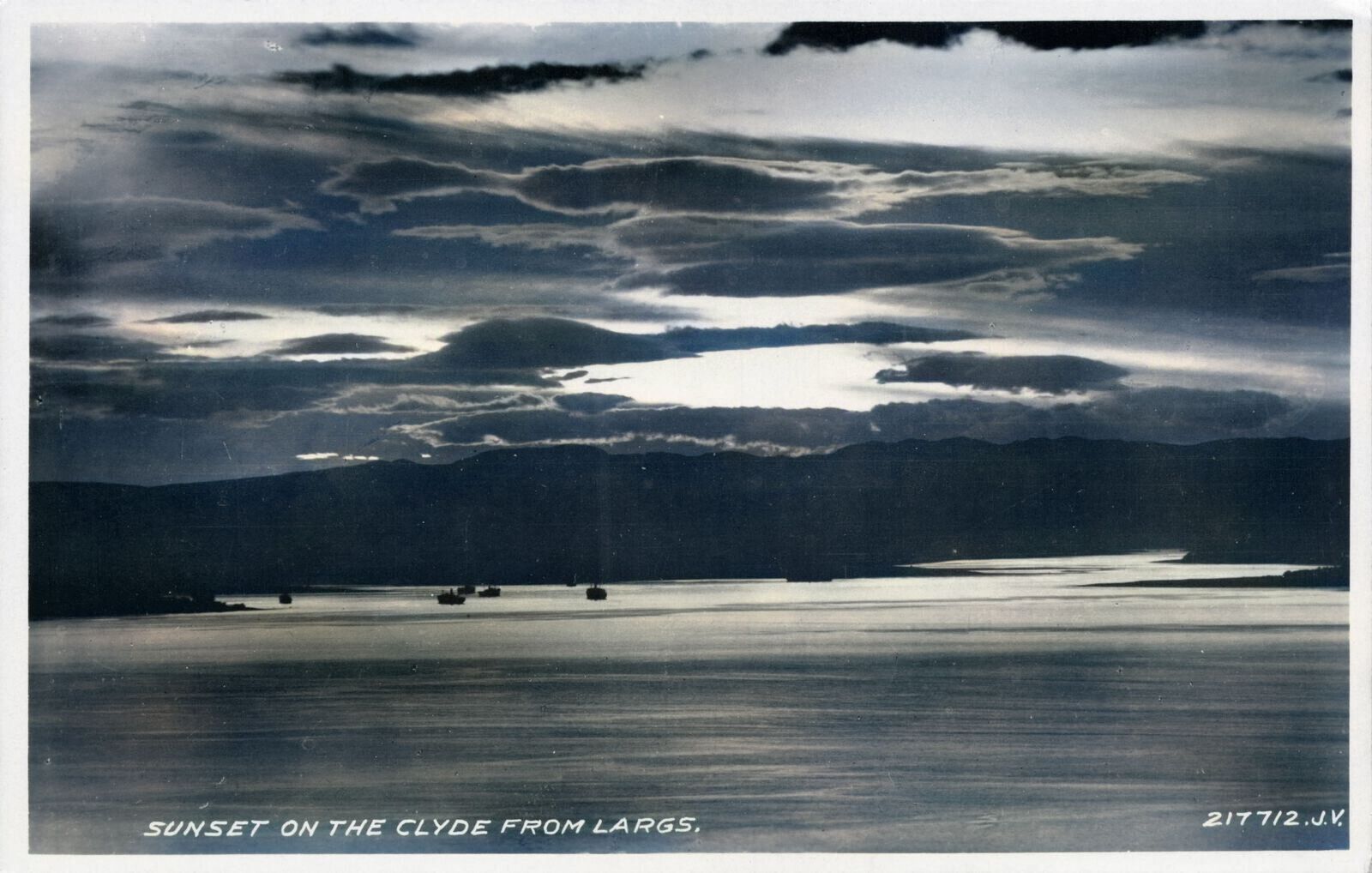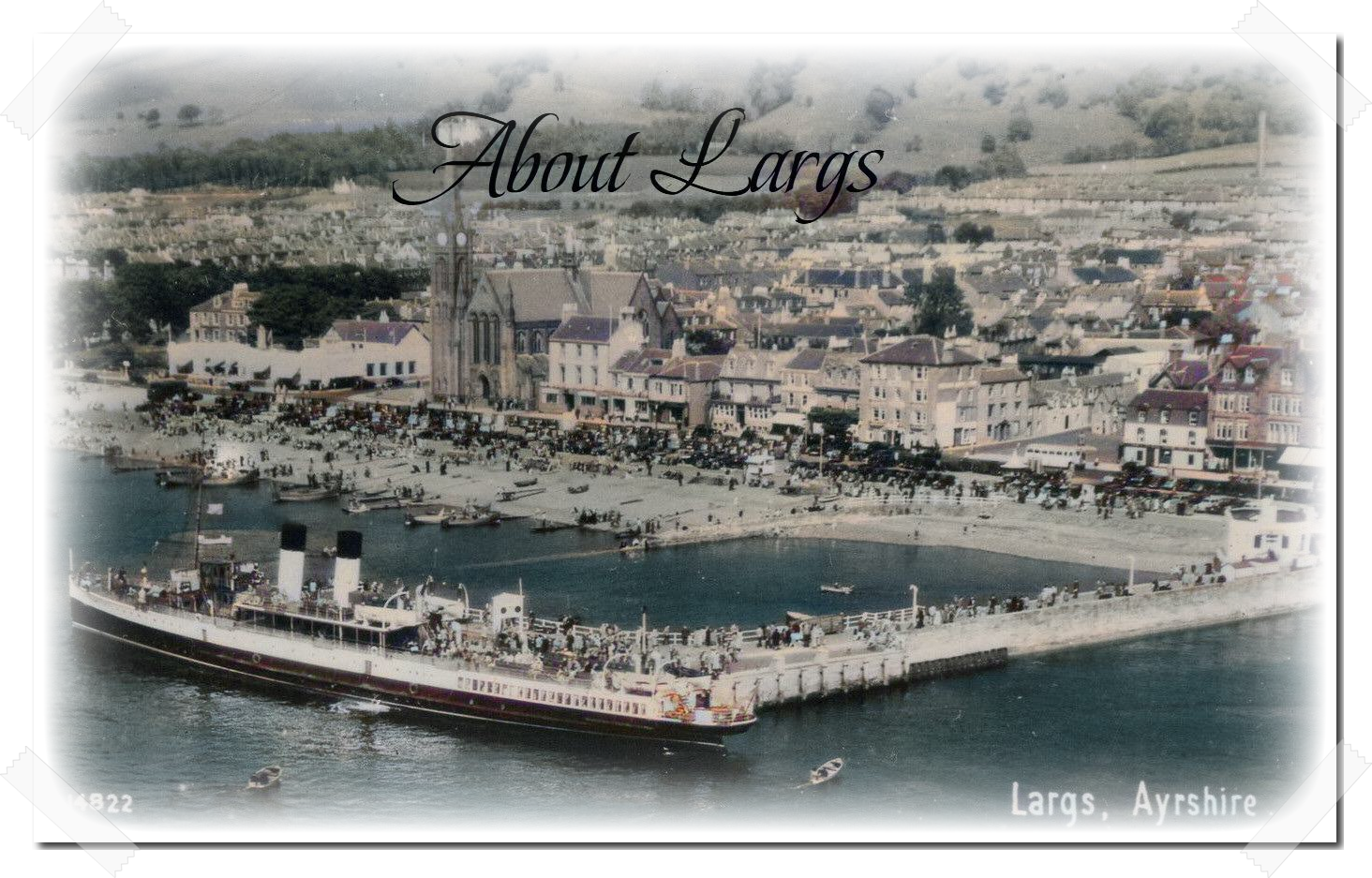

POPULATION: 11,030 | COORDINATES: 55.794°N 4.867°W
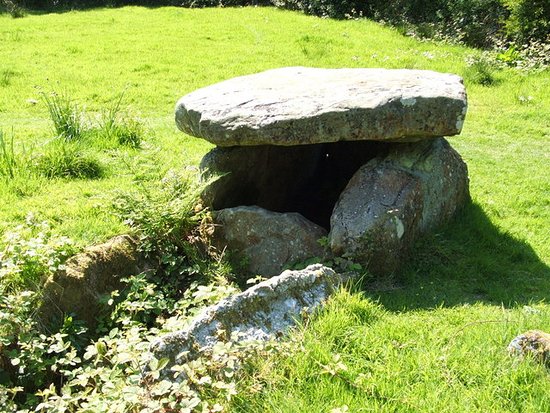
A settlement of some kind almost certainly always existed here, at least so long as the climate and sea-levels (both of which have fluctuated throughout the ages) have allowed it. For thousands of years people have been fishing and farming here. In fact, there is a dolmen situated in Largs, just beyond Douglas Park. Just how long ago the dolmen was constructed in impossible to say. Suggestions range from 3,000BC to 20,000BC. To what extent the coastline and the landscape has changed in the thousands of years since these ancient monoliths were first quarried and erected it's impossible to say with any certainty. All that is certain, is that there have been changes and that life and society has existed here for thousands of years.
In the centuries after the fall of the Western Roman Empire, Largs was part of the old Brythonic kingdom of Strathclyde that once reached all the way down into Lancashire. The concept of the political entity of 'Scotland' didn't exist back in those days, and just as Strathclyde stretched from beyond North of the Clyde down into modern Lancashire, so on the Eastern side of the nation, Northumbria reached all the way from the Humber past Edinburgh. The population was always mostly of original Brythonic descent, even after Keltic tribes began migrating into the lower Hebrides, and this was embellished by a strong Nordic presence following colonisation of the majority of Britain and Ireland by the Norse/'Vikings' from Scandinavia (including - and especially - Denmark).
In large numbers, Anglo-Saxons also colonised what we now call the 'lowlands' all the way up to the Clyde-Forth line, and after 1066 - although it was never militarily attacked, after establishing themselves in the rest of Britain, Normans (including Flemish and Frisians) too began settling in large parts. Norman influence became very apparent in much of the ecclesiastical architecture of the Scottish region of the 12th and 13th century. The poulation of the Ayrshire & Inverclyde region at this time had become a blend of Old Britons, Anglo-Saxons and Normans/Flemish.
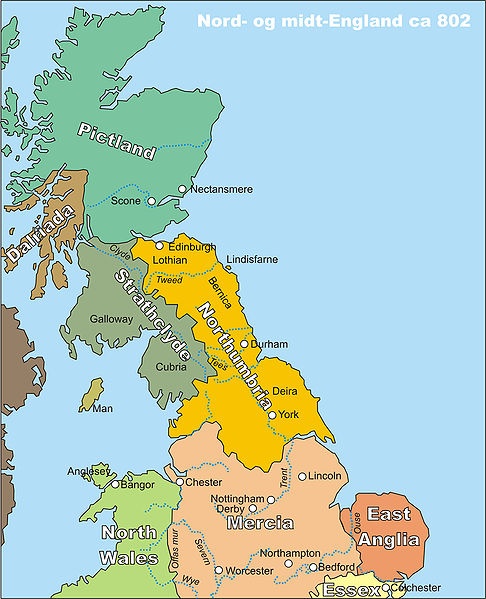
Many people who begin looking into the 'battle of Largs' quickly become disappointed that there is no detail on the 'battle itself'. With research, it becomes clear that there cannot be any detail on any 'battle of Largs' simply because there is no evidence any significant battle ever occured. In fact the author of a slim but conclusive book called The Battle of Largs - Emeritus Professor of Scottish History & Literature at the University of Glasgow, Edward Cowan - states plainly that the most anyone can say with confidence is that there may have been a 'Skirmish of Largs'.
According to this book, the best a historian can do in delivering this subject matter to the general public, is to elaborate the various goings-on that A) led to, and B) followed the 'Skirmish of Largs'. It's apparent that the 'Largs event' was extremely important to the history of the Scottish region and to Norway for what it led to, mainly with regard to the fate of King Haakon and the domination of the Norwegian power over the Western Isles of Britain.
As a result of the events at Largs on the 2nd of October 1263, King Haakon wintered with his expeditionary forces at Orkney, and while there, developed a severe illness and promptly died. While the stormy conflagration at Largs wasn't a defeat for the Norwegians, neither did it have any semblance of a conclusive victory, and so it's aim was not achieved, while for King Alexander (III 1249-1286), there was success in that his forces had seen off the Norwegian threat.
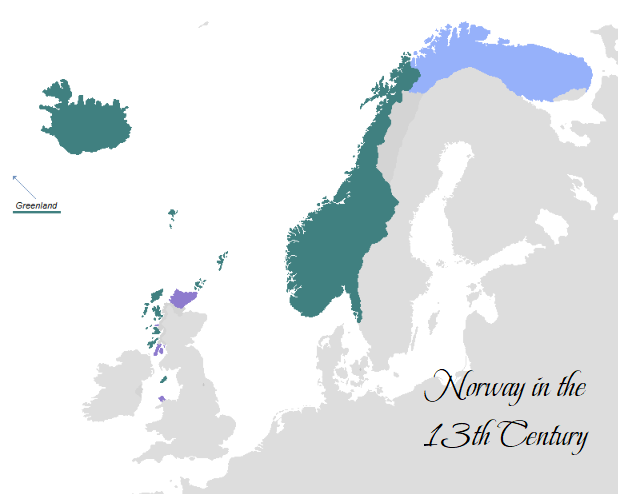

To commemorate the event, in 1912 a stone monument now known colloquially as 'The Pencil' was erected at the Southern end of the promenade, roughly the location where archeologists surmise that the skirmish took place - though no one knows for certain. It is built of whinstone and reaches 70 feet in height. In the Summer, the area around the monument makes for a most pleasant location for relaxation and leisure, and due to it being a good half hour walk from the centre of town, tends to be less busy than other promenade beauty spots.
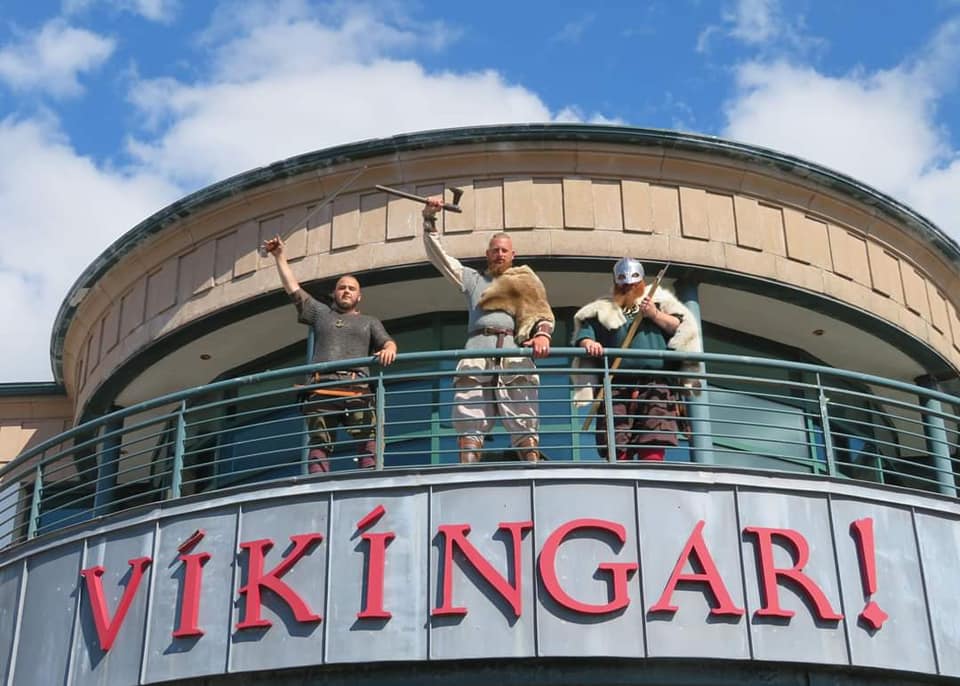
In commemoration of the 1263 Norwegian-Scottish historical episode, in the first week of September, Largs hosts one of the most prominent 'Viking' festivals in Europe, with people travelling from afar to attend. In fact, the Model Boat Club usually hosts our annual Open Day on the last Sunday of the festival. Our most recent Open Day was an enormous success and you can read about it HERE.

Largs can boast the residency of two world famous men - Lord Kelvin Sir William Thomson and Major-General Sir Thomas MakDougall Brisbane. Skelmorlie Aisle has the appearance of a small kirk, and when it was constructed in 1636 it was indeed part of alrger structure belonging to the Old Church of Largs. Skelmorlie Aisle is dedicated to the Montgomeries, who were an ancient aristocratic Norman family. Skelmorlie Aisle features wodnerful ceiling and wall murals depicting astrotheological imagery, but the centrepiece is the tomb of Sir Robert Montgomerie (1584 - 1681), 7th lord of Skelmorlie, knighted by James VI, created baronet by Charles I.
Brisbane Aisle is essentially the burial-vault/mausoleum for the Brisbane family. Built in 1634 for the Shaws of Kelsoland, at some point in time after 1695, it became the the mausoleum for the Brisbane family. Major-General Sir Thomas Makdougall Brisbane (1773 - 1860) achieved much as a son of the British Empire. The city of Brisbane in Australia owes it's name to him, realting to his time as governor of the province of New South Wales from 1821 to 1825. His final resting place is Brisbane Aisle.
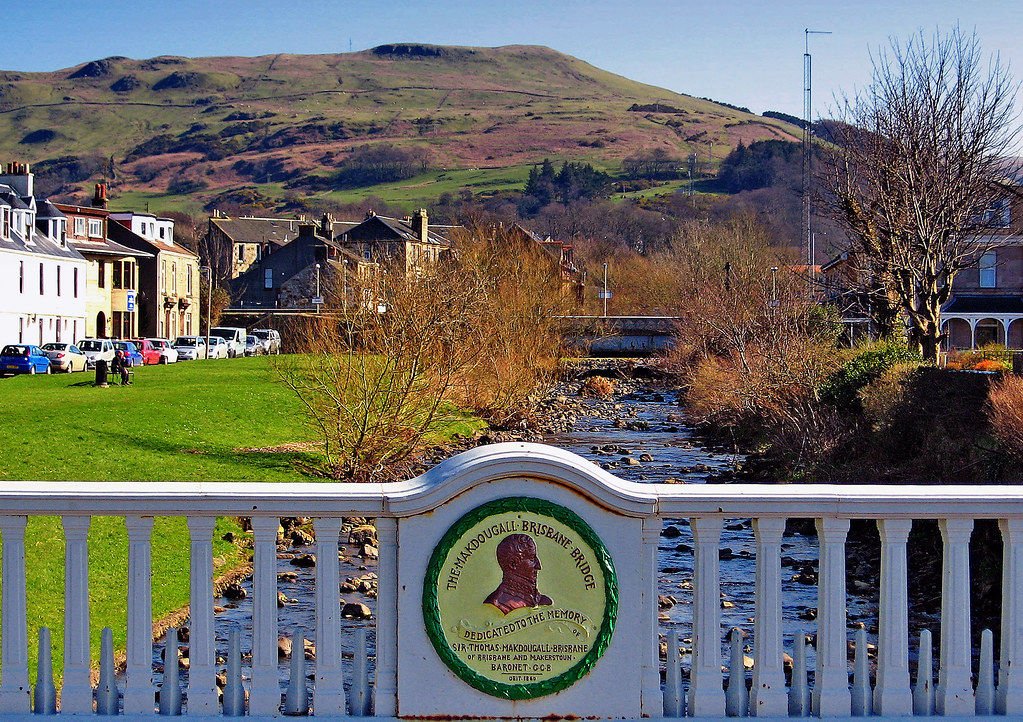
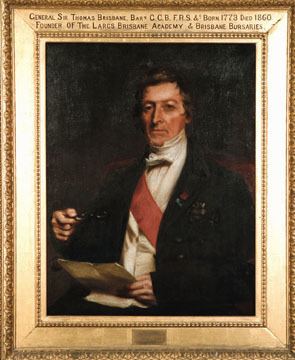

Lord Kelvin Sir William Thomson was truly a man of genius. Enrolled at age 10, he is the University of Glasgow's youngest ever student. A mathematician, physicist, engineer, an inventor and a successful businessman, born in Belfast, he spent his final years in Largs, residing at the magnificent Netherhall, not far from our Aubery Park pond. He was knighted by Queen Victoria for his contributions to mathematics and the study of electricity. Some of you may well be familiar with the unit called the 'kelvin', which is the primary unit of temperature in the International System of Units (SI), used alongside its prefixed forms and the degree Celsius. The Kelvin scale is an absolute thermodynamic temperature scale, meaning it uses absolute zero as its zero point.
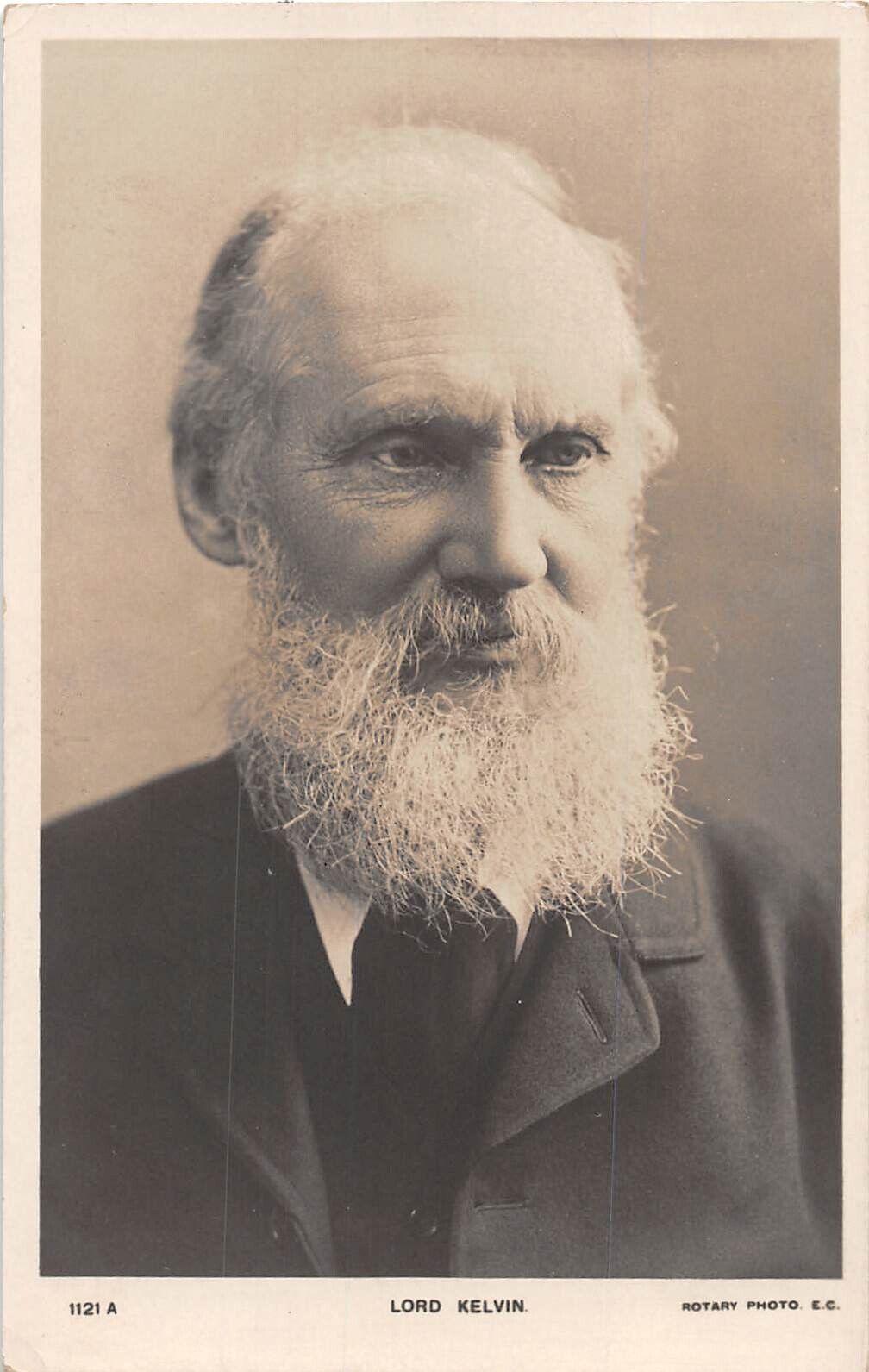
Lord Kelvin was principally responsible for the laying of the first transatlantic telegraph cable between Ireland and Newfoundland in 1858–1866. This was an epic undertaking with huge practical difficulties and Kelvin did much of the original scientific work and invention that made it possible.Two attempts to lay an electric cable under the ocean from Britain to America had failed in 1858. At the third attempt, Lord Kelvin took on board the battleship HMS Agamemmnon a new invention of his called the Galvanometer which could detect and record the faint electrical signals in the cable under the sea. This enabled the work to be completed. Lord Kelvin also pioneered electric light, and in 1881 made his home in Glasgow the first house in the world to be fully lit by electricity, using 106 lamps. He invented an improved form of the mariner's compass for iron ships. This was the first instrument that could provide a true reading of magnetic North in spite of the permanent magnetic moment of the ship and the additional moment induced in the hull by its orientation in the Earth’s field.
A man of such national significance, he was granted burial in Westminster Abbey, next to Sir Isaac Newton.
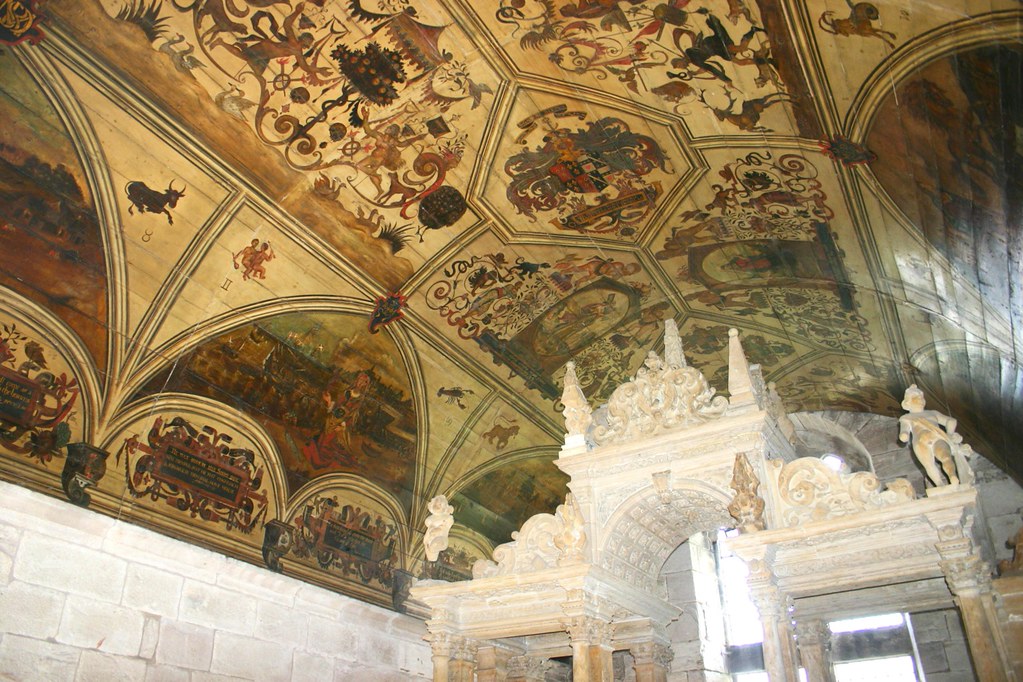


The promenade wasn't always a promenade. In fact, up until recently it was known as the Queen Victoria Esplanade. As can be seen from the pre-war images below, the area by the shore was much more open and far less cluttered. Walking was not merely restricted to the slim path that hugs the shingle, and for this reason it was an esplanade, rather than the more restricted promenade it is today.
We can only guess of the freedom and comfort people felt walking along the esplanade in those days, when there were no sounds of traffic, no litter, no dog mess and a more natural habitat. The proliferation of the private motor car is the main reason - though not the only reason - for what some might call the 'over-development' of the area and others like it.


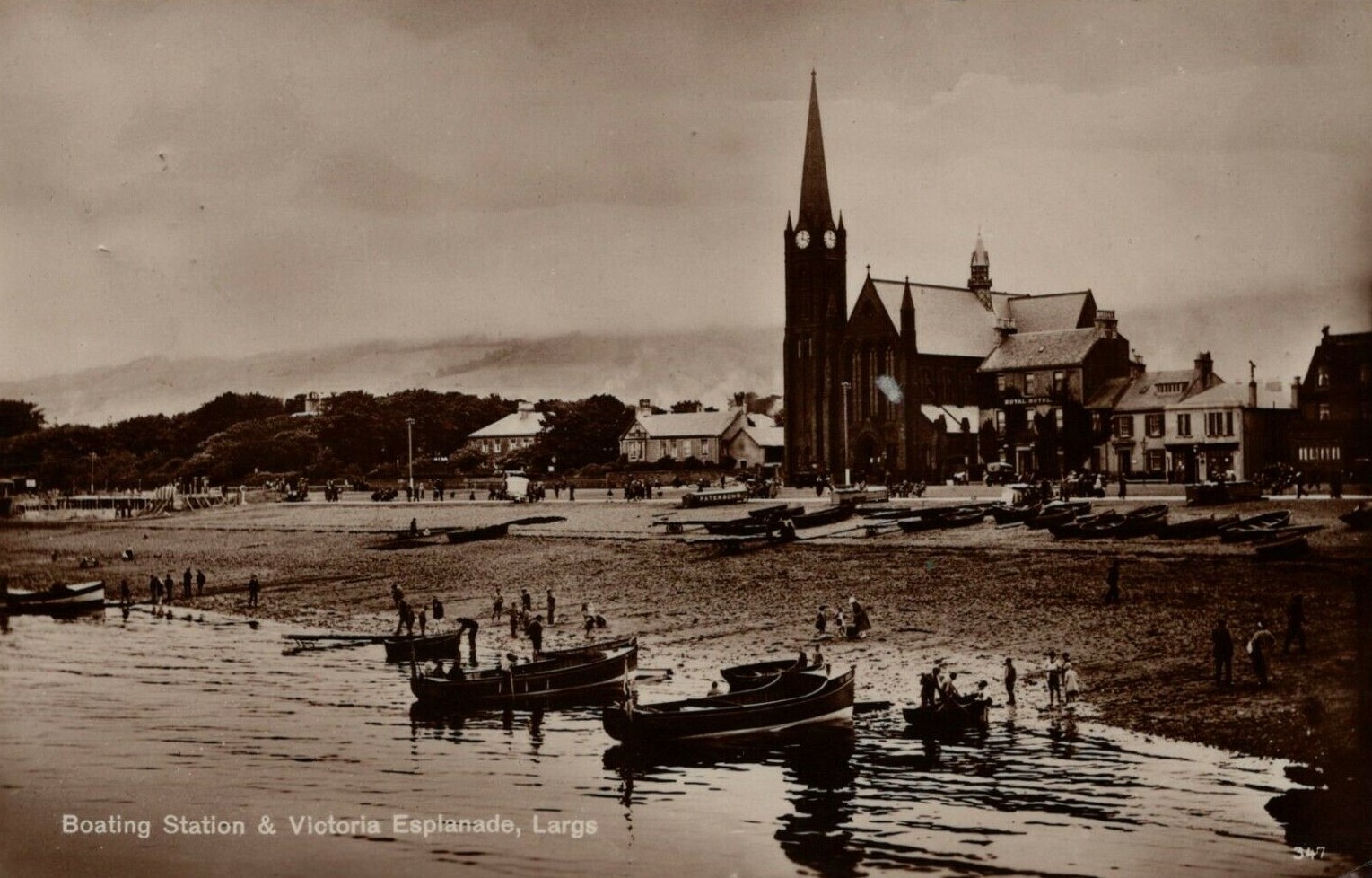
Largs has been one of the main destinations for Clyde tourists for a very long time. Nowadays by car, train or bus, but once by steamer. The Paddle Steamer PS Waverley is the most famous of these vessels due to it's longevity, being now the only original sea-going paddle steamer in the world. Every Summer, she can be seen frequently stopping at Largs, sometimes berthing overnight. Less frequent is the Hebredean Princess (seen approaching Largs in the image below) and even rarer is the Clyde 'Puffer' the VIC32 - still coal fired!
In March 1914 Torpedo destroyer HMS Laverock found itself beached on the coast in between Largs and Skelmorlie - fortunately the vessel was photographed prior to it's salvage. More images and information can be found HERE and HERE.
In the next slide, the Marchioness of Bredalbane chugs towards the pier from the North, some point in timer prior to the First World War. In the next image, the calendar moves ahead about 70 years to people queued up at the car slipway waiting to board the ro-ro ferry across to the Cumbrae slipway.
Another image taken before the First World War features boating stations along the shore, where, for a small fee, folks could hire a sturdy rowing boat for an excursion on the water.
T.S. Duchess of Argyll is a fine example of one of the aforementioned Clyde steamers, the image above taken at Largs pier way back before the First World War. The image that is simply captioned 'The Pier, Largs' features a single-funnel steamer the name of which is unknown at present [if you know for certain, send us a message!].
A colourful picture shows some hard working fishing vessels berthed at the pier on a beautiful day. After this image is featured the beautiful looking Royal Yacht of King Edward VII, appearing stationary under steam off Largs in a very rare image.

To the far South of the town, beyond the 'Pencil' monument, Largs boasts one of Britain's best marinas, officially known as Largs Yacht Haven. A most splendid location, world-class facilities, and superior service make Largs marina one of the jewels in our crown, and something that 'Largsfolk' are proud to host.
In fact, Largs Yacht Haven is frequenty nominated in the British Yachting Awards and has even been victorious in the past.


Available 24 hours per day, 365 days per year, the marina provides everything a yachtsman may need. An extensive boatyard facility with array of marine services on-site including chandlery, engineers, sailmakers, riggers, on-water fuel station, pontoons serviced with water, electricity and wi-fi, recycling & specialist waste disposal, luxury washroom and laundry facilities, Scott's Bar & Restaurant and the Bosun's Table Deli & Cafe, as well as sailing schools, yacht charter and even new boat sales and brokerage.
Truly, a yacht haven!

Visitors to Largs generally are spoilt for choice when it comes to finding an eatery to satisfy their gastronomical urges. We have some of the best fish & chips shops on the West coast as well as fantastic restaurants, cafes and pubs. From Spring, through Summer up to the beginning of Autumn, there are handy kiosks on the promenade.
Whether it's a muscular coffee, a dreamy ice-cream, a poke of sweets, an indulgent cake, a glorious pint, or a hearty meal, you will find what you want.
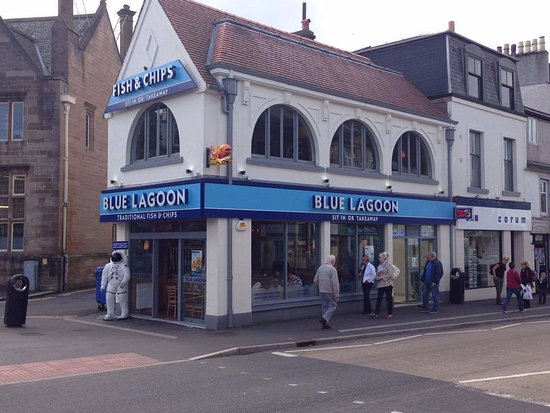
Ice Cream is one of Largs' strong points. Besides the kiosks on the promenade, Geraldos will have anyone's palette satisfied with their dazzling array of ice creams and other sweet treats. If cafés are your thing, you will be spoilt for choice. We have a wonderful selection of local businesses ready to serve you: The Bagel Basket, Café Renard and Riviera Coffee and the famous Green Shutters just south of the ferry terminal. And of course you can find the ubiquitous Co$ta, if you must.
Nardini is one of the more well-known, and certainly the most well-established eating establishments in Largs, having been in the town since the 1930s - hence the dominant Art Deco theme inside and out, which i've heard some people like.
On the other side of St Columba's church, is a fairly new Italian restaurant called Allegria, which has earned praise and plaudits since opening.
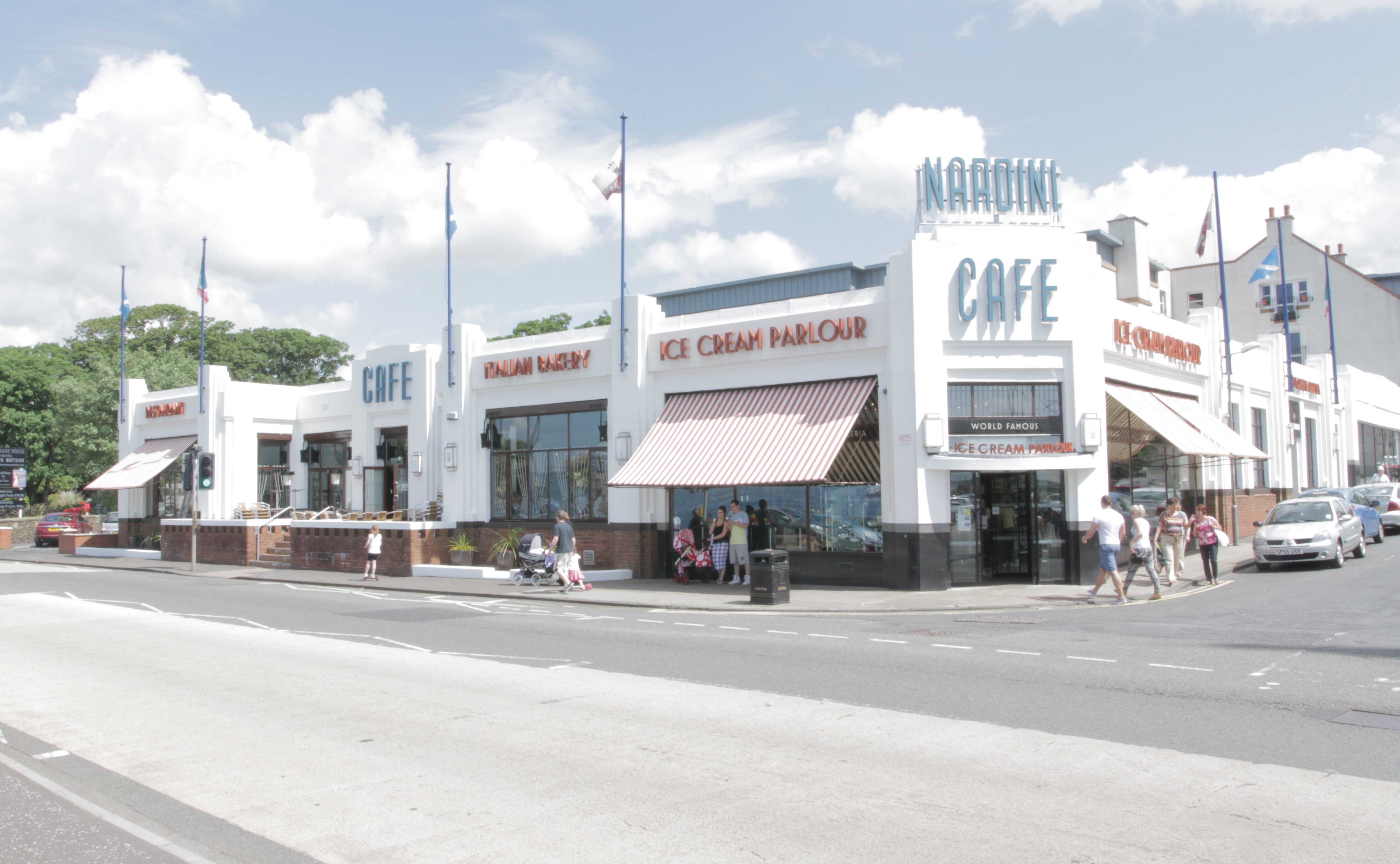

Speaking of Mackerston, prior to the construction of Aubery Pond in 1963, Largs model boating pond was down where the Mackerston children's playpark is now. Here is a wonderfully colourised 1900s view:
.png)

Largs has had some interesting events over the years; some planned, some not so planned. One that was not so planned was the train crash of 1995, where one of the SPT (Strathclyde Passenger Transport) class 318 EMU's crashed through the station buffers, over the concourse, through the station building behind and onto the Main Street. It was a near miracle that no one was killed. The photos were spectacular:

Being on the coast of the Firth of Clyde, any vessel that sails North towards the Clyde must come within sight of Largs (visibility is weather depending, of course!). Some may be aware that the great ocean liners RMS Lusitania, RMS Aquitania, RMS Empress of Britain, RMS Queen Mary and her running mate (not a sister ship) RMS Queen Elizabeth as well as RMS Queen Elizabeth 2 were all built on the Clyde. Unfortunately photographs of these magnificent feats of early 20th century British maritime engineering passing between Bute and Largs/Skelmorlie are either exceptionally rare, or just non-existent. However, an image of RMS Mauretania (not Clyde-built) passing Skelmorlie can be found HERE. RMS Olympic, one of RMS Titanic's two sisters, did in fact pass Largs on the 3rd October 1914 on her way to Greenock as there were inadequate berthing facilities further South as a result of the First World War which had broken out two months prior. According to The Times Shipping section of Oct 10th 1914, she remained there a few days before sailing from Greenock direct to New York that day. According to her log book, on her return across the Atlantic, she was supposed to be berthing in Greenock but was instead diverted to Lough Swilly (and thence onto Belfast) in Ireland due to the sinking of King George V-class dreadnought battleship HMS Audacious by a German mine on the 27th October. This was her last trip as a passenger vessel until after the war during which she was requisitioned as a troop transport as HMT Olympic. Titanic & Olympic's sister, Britannic, was herself requisitioned as a hospital ship.
The Caledonian MacBrayne ferries may be far less impressive than these leviathans, but the short ferry across to Cumbrae can be rather pleasing on a day of favourable weather. Further up the coast at Weymss Bay, one can get another, larger ferry to Rothesay, a trip of about 35 minutes that boasts some fantastic scenery on the way. Ships usually employed on this route are the MV Bute and sister ship the MV Argyll, both built in Polish shipyards (i know), while the vessels normally in service on the local Largs-Cumbrae crossing are the MV Loch Shira (pictured below at Largs alongside PS Waverley) and MV Loch Riddon.

Having been contructed in 1963, Aubery Park became a picturesque nook at the Northern-most end of the promenade. As can be seen above, it once hosted pedalos, crazy golf, paddling pools (still visible though now in an advanced state of disrepair) and extensive flower arrangements.
Unfortunately, pictures of the area that is now Aubery Pond from the time prior to it's building in 1963 are extremely rare. However, it has been possible to provide a couple of very interesting images of Aubery Crescent, which is the main route to the pond from the promenade. In the 'Largs From Aubery Crescent' image (which from the type of cars appears to date from the late 1950s) in the background the steamer appears as if it could be the TS Queen Mary - still extant, docked in Glasgow next to the PS Waverley and (excitingly) scheduled to have new engines and boilers installed in 2024. The other image - wonderfully atmospheric - of Aubery Crecent shows it in something of a 'virgin' state, being taken at the dawn of the Edwardian era in 1902.
If anyone wishes to sumbit any additional images to this page, we would be delighted to receive them. Furthermore, if anyone finds any errors in the information on this page, or wishes to see something added, please let us know via the contact page!
